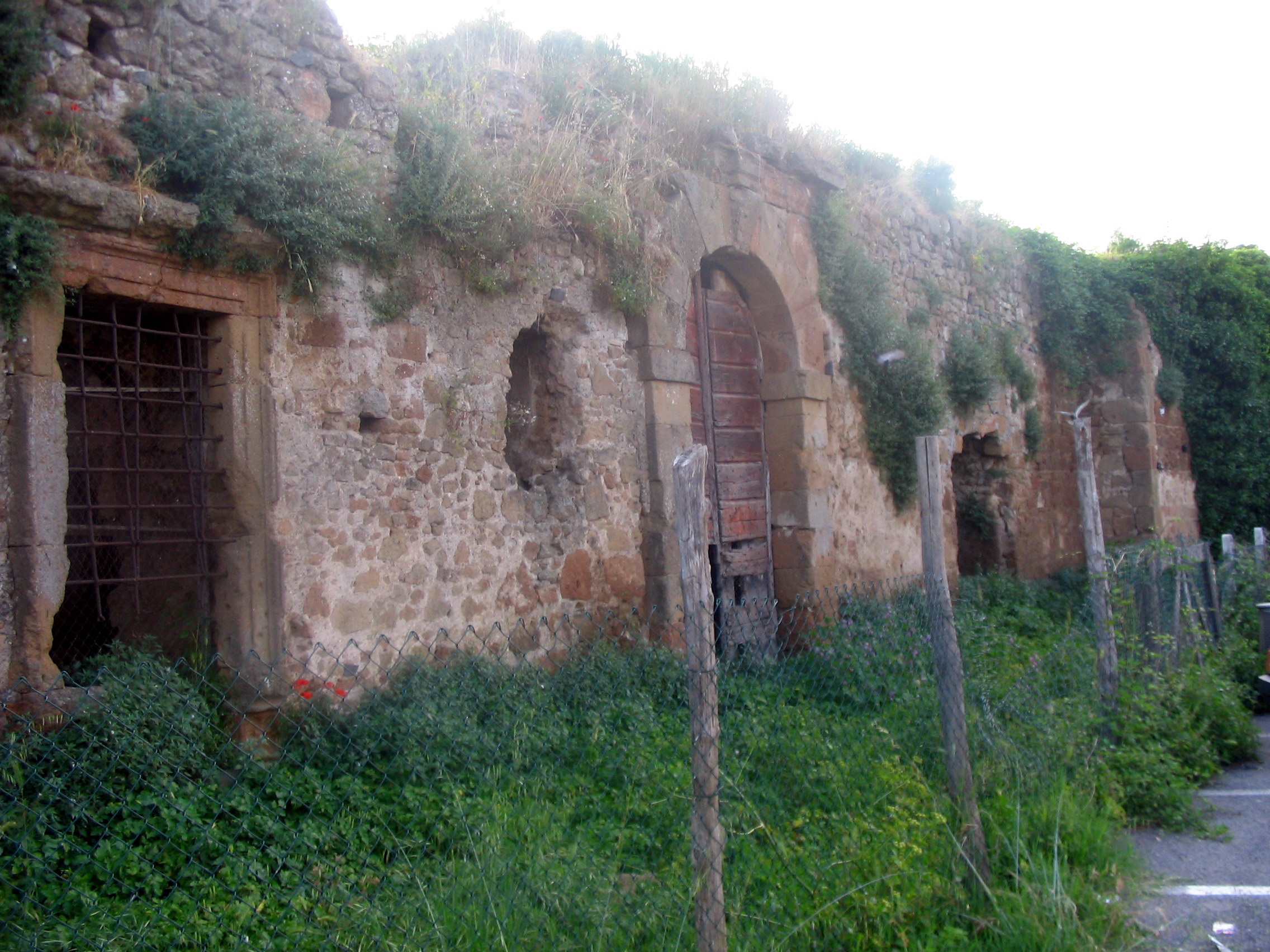Agger (ancient Rome) on:
[Wikipedia]
[Google]
[Amazon]
 An agger (
An agger (
Latin
Latin (, or , ) is a classical language belonging to the Italic languages, Italic branch of the Indo-European languages. Latin was originally a dialect spoken in the lower Tiber area (then known as Latium) around present-day Rome, but through ...
) is an ancient Roman
In modern historiography, ancient Rome refers to Roman civilisation from the founding of the city of Rome in the 8th century BC to the collapse of the Western Roman Empire in the 5th century AD. It encompasses the Roman Kingdom (753–50 ...
embankment or any artificial elevation.
The most common agger was the ridge or embankment on which Roman roads were built to give the proper draining base. The agger was constructed by excavating the line of the road, building a firm foundation, refilling and compressing the soil, adding more soil from digging drainage ditches or fosses on one or both sides of the road, then surfacing with graded layers of stone and cobbles. The material used to build the aggers was dug from lateral ditches.
Once the material was dug out of the ditches that were known as "scoop ditches", they were used as the storm drain for that road. These ditches could also be used for soldiers to hide in if they ever were under attack from enemies.
On the most important road routes, the agger could be high and wide. Along less important routes the road is occasionally set directly on the levelled ground surface with stones laid to provide drainage with the lateral ditches barely visible. The material was usually found locally, though the Romans brought in the material from other places if they could find no suitable stone. The course of a Roman road can often be traced today by the distinctive line of the agger across the landscape.Ivan Margary, ''Roman Roads in Britain'', John Baker 1973, 3rd ed. Introduction pp. 18–22
A well-known example is the Agger Servianus Agger may refer to:
* Agger (surname)
* Agger (ancient Rome), a type of ancient Roman rampart or embankment
* Agger (river), a river in North Rhine-Westphalia, Germany
* Agger nasi, an anatomical feature of the nose
* Agger Rockshelter, in Wisconsi ...
, a part of the Servian Wall
The Servian Wall ( la, Murus Servii Tullii; it, Mura Serviane) was an ancient Roman defensive barrier constructed around the city of Rome in the early 4th century BC. The wall was built of volcanic tuff and was up to in height in places, wide ...
of Rome
, established_title = Founded
, established_date = 753 BC
, founder = King Romulus ( legendary)
, image_map = Map of comune of Rome (metropolitan city of Capital Rome, region Lazio, Italy).svg
, map_caption ...
, which protected the city on its most vulnerable side, the Campus Esquilinus
Campus Esquilinus was an area on the Esquiline Hill in ancient Rome. It was the site of many extravagant buildings as well as baths and gardens. The Campus Esquilinus was also the site of executions and burials, though it was eventually turned int ...
. It consisted of a double rampart
Rampart may refer to:
* Rampart (fortification), a defensive wall or bank around a castle, fort or settlement
Rampart may also refer to:
* "O'er the Ramparts We Watched" is a key line from " The Star-Spangled Banner", the national anthem of the ...
bearing formidable fortification
A fortification is a military construction or building designed for the defense of territories in warfare, and is also used to establish rule in a region during peacetime. The term is derived from Latin ''fortis'' ("strong") and ''facere ...
s.
References
Ancient Roman architectural elements Latin words and phrases Roman archaeology Roman fortifications {{AncientRome-struct-stub